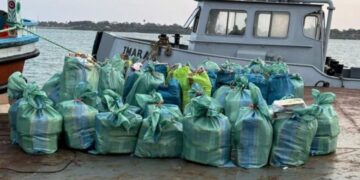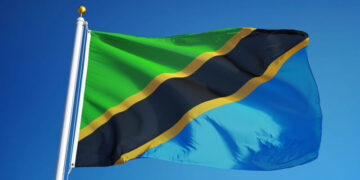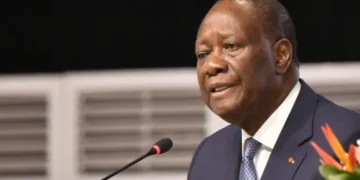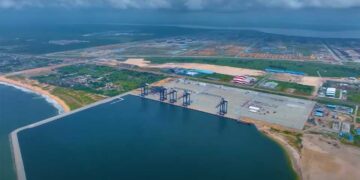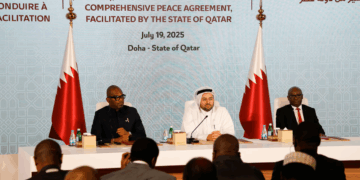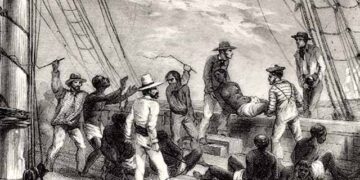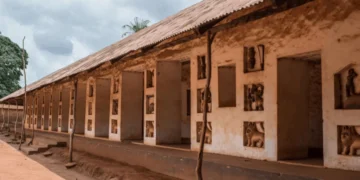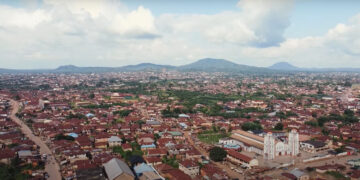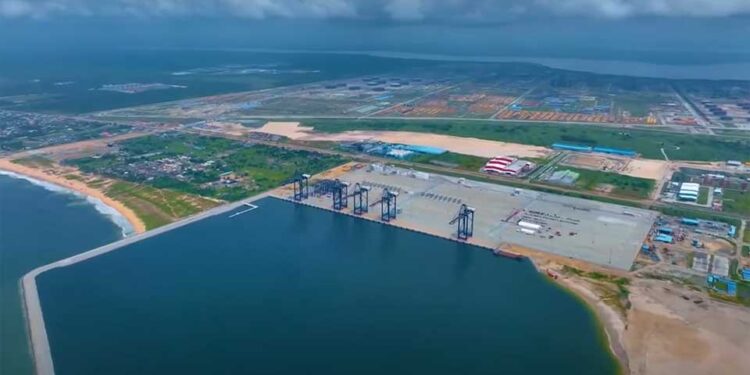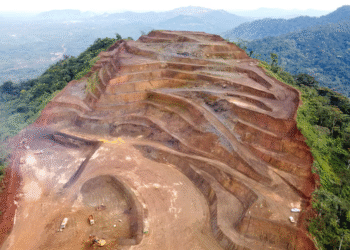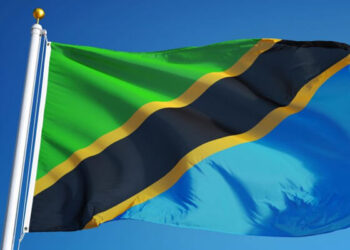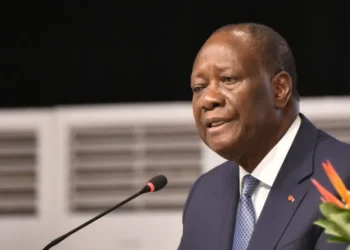Given the uniqueness of coastal and marine environments in terms of their characteristics, resources, the competing sectors, and their contribution to the global socio-economy, they require appropriate governance through relevant legislative and institutional frameworks. In the absence of appropriate governance, i.e., established rules and laid-down processes for the exploitation of common resources, usage becomes subject to individual discretion, increasing the vulnerability of these resources to unsustainable levels.
Although the specific forms of governance may vary across countries depending on the political, fiscal, socioeconomic, and cultural context, the governance must emphasis the three key components, i.e., laws, institutional frameworks and the mechanism of implementation, coupled with fairness, rules, accountability, stakeholder participation, and transparency at all levels.
This year marks the end of the Decade of African Seas and Oceans (2015-2025)—an African Union (AU) initiative to promote the sustainable use and governance of Africa’s marine and coastal resources. Experts say, by 2025, the continent should have benefited from insights into best practices for combating maritime threats, protecting and restoring marine ecosystems and biodiversity, and assessing the strengthening of institutional capacities.
Africa’s declining share of global exports (from 3.5 percent in 2009 to 3.2 percent in 2023) underscores its marginal role in global value chains, driven by geopolitical tensions and protectionist policies. The rivalry between the United States and China over semiconductors and critical minerals disrupts supply chains, limiting Africa’s participation in high-value sectors like electronics.
Meanwhile, global protectionism, including the European Union’s Carbon Border Adjustment Mechanism and tariffs imposed by the United States, threatens African exports. Africa’s rich deposits of critical minerals, such as cobalt and lithium, attract global interest, but partnerships risk perpetuating exploitative models with limited local value addition. Strengthening African-led value chains by establishing the African Continental Free Trade Area (AfCFTA) and investing in infrastructure and digital finance are essential to enhance resilience and reduce reliance on volatile global markets.
Consequently, this article explores emerging maritime opportunities in Africa (with emphasis on West Africa), changing flows of maritime goods and vessel demand, port hubs, fleet needs and forecasts, fleet construction and maintenance, alternative fuels and bunkering opportunities, and high-priority recommendations.
The West Africa’s Maritime Hubs in Focus
The UN Trade and Development (UNCTAD) statistics classify the following countries as part of West Africa: Benin, Burkina Faso (landlocked), Cabo Verde, Ivory Coast, Gambia, Ghana, Guinea, Guinea-Bissau, Liberia, Mali (landlocked), Mauritania, Niger (landlocked), Nigeria, Saint Helena, Senegal, Sierra Leone, and Togo.
In 2021, the region loaded 105 million metric tons of dry cargo and discharged 107 million metric tons. This represents a significant increase from 2006, when 40 million metric tons were loaded and 62 million metric tons were discharged. Initially, crude oil dominated the loading segment, peaking at 111 million metric tons. However, by 2021, this figure had decreased to 76 million metric tons, indicating a shift in cargo dynamics over the years.
Today, the world is being re-ordered by supply chain shifts, digital infrastructure, and the geopolitics of energy and rare earths. In this reordering, West Africa cannot afford to be passive. We have scale. We have strategic resources. But we lack the coordination needed to convert those assets into influence, observers indicated.
Most segments of shipping today are maintaining a very healthy cash flow, but complexities ahead are building. Alongside underlying (and often supportive) existing trends and “traditional” supply / demand “fundamentals”, navigating the complexities from geopolitics, disruption events, tariffs, sanctions, energy transition (and energy security) are becoming increasingly important in weighing up the opportunities and risks ahead.
Long before colonial borders divided us, West African trade routes stitched together forest, savannah and Sahel. Livestock moved southward; kola nuts moved northward. Markets such as Salaga, Katsina and Kano thrived not because of central planning, but because of mutual interest. That spirit endures in spite of bureaucracy, not because of it.
In West Africa, the principal maritime nations in the container trade sector include Cabo Verde, Ghana, Nigeria, Sierra Leone, Ivory Coast (Côte d’Ivoire), Guinea, Senegal, and Togo. Nigeria previously led in container handling volumes but was surpassed by Togo in 2020. The Port of Lomé stands as Togo’s primary container facility. Since 2014, the shipping company MSC has been investing in this port through its terminal subsidiary, Terminal Investment Limited (TiL).
Additionally, container throughput at Ghana’s ports has shown significant growth in recent years. Remarkably, in 2021, Ghana’s throughput volumes exceeded those of Nigeria. To enhance the container port of Tema, APM Terminals, in collaboration with partners, invested approximately 1 billion USD. This upgraded port commenced operations in 2020.
To date, the most active payment corridors on the Pan-African Payment and Settlement System (PAPSS) are in West Africa, according to Afreximbank, where the scheme was first rolled out. The corridor between Ghana, the network’s original launch market, and neighbouring Nigeria remains the busiest payments channel by far.
The Pan-African Payment and Settlement System (PAPSS) is a centralized financial market infrastructure that enables the efficient flow of money securely across African borders, minimizing risk and contributing to financial integration across the regions. PAPSS collaborates with African central banks to offer payment and settlement solutions that commercial banks and licensed payment service providers (switches, fintechs, aggregators, etc.) across the continent can connect to, making these services accessible to the public.
Why the Fleet Market is Poised for Explosive Growth
The global fleet management market size was valued at USD 23.4 billion in 2024 and is estimated to register a CAGR of over 16% between 2025 and 2034, driven by e-commerce growth and increasing last-mile delivery demands. For this companies invest their resources in real-time tracking, route optimization and automation technologies which improve their fleet performance.
Advanced technologies are driving innovation in the fleet management space. Not only are fleets making the move toward implementing fleet management solutions, they are increasingly adopting such technologies as artificial intelligence (AI) and Internet of Things (IoT) to optimize their fleet operations. AI-powered algorithms and machine learning enable intelligent route planning, predictive maintenance and real-time monitoring of vehicle performance, while IoT devices provide valuable data on vehicle location, fuel consumption and driver behavior.
LNG remains the most popular alternative fuel, with LNG-fueled ships now accounting for two-thirds of all alternatively fueled ships on order. In comparison, methanol-fueled ships represent 31% of the total. While methanol led alternative fuel orders in 2023, it has since been overtaken by LNG.
The increasing number of vehicle maintenance regulations drives companies to adopt the fleet management market. Heavy constraints from regulators create an overwhelming situation for fleet managers who operate substantial fleets throughout multiple sites. Many laws seek to maintain vehicle safety standards and decrease air pollution, while the California Air Resources Board (CARB) enacted requirements in January 2024 for logistics companies to adopt zero-emission vehicles (ZEVs) specifically for dense population zones. Major delivery corporation FedEx has started adopting electric trucks because of this policy, which requires emission reductions.
Strategies for Tomorrow: Effective Policy Planning for Future Development
Policy shifts, escalating trade wars, and policy uncertainty are behind the let-up of global trade, potentially dampening global demand, according to experts. They say these trends are likely to have adverse effects on African trade. As AfCFTA advances, maritime transport and port infrastructure will become critical for intra-African trade. Once the charter is active, signatories are compelled to standardize maritime regulations, enhance port infrastructure, and streamline cross-border trade.
Bridging Fleet Capacity Gaps: Hidden Local Prospects:
Ship Repair and Maintenance refers to the preventive, corrective or condition maintenance activities required for a marine vessel. The global ship repair and maintenance service market is projected to reach USD 56.8 billion by 2035, recording an absolute increase of USD 26.8 billion over the forecast period. The market is valued at USD 30 billion in 2025 and is set to rise at a CAGR of 6.6% during the assessment period.
The market is segmented by vessel type, service, and region. By vessel type, the market is divided into oil and chemical tankers, bulk carriers, general cargo, container ships, gas carriers, offshore vessels, passenger ships and ferries, and mega yachts and other vessels. Based on service, the market is categorized into general services, dockage, hull part, engine parts, electric works, and auxiliary services. Regionally, the market is divided into North America, Latin America, Western Europe, Eastern Europe, East Asia, South Asia Pacific, and Middle East & Africa.
West Africa has a patchwork of repair yards; there is an opportunity to expand ship-repair capability (dry docks, skilled labor, supply chains) to capture increasing regional tonnage and Offshore Supply Vessel (OSV) maintenance linked to oil or gas activity. Investments yield good local employment and reduce downtime or owner costs.
The fundamental supply and demand dynamics of the industry remained in fine balance during the year, with underlying trade volume growth and disruptions to trade patterns increasing demand, while the supply side remained challenged by low order books in certain sectors and a tight shipbuilding market.
In West Africa, according to Clarksons’ experts, local large-scale shipbuilding is limited; a realistic near-term strategy is to focus on smaller coastal vessels, ferries, barges, and medium-size OSVs built or assembled regionally, with larger commercial newbuilds still sourced from established yards (Korea, China, and Vietnam). Public-private partnerships and targeted incentives (tax breaks, local content requirements, and skills programs) are needed to scale yards.
Eco-Friendly Seas: The Alternative Bunkering Revolution:
The International Maritime Organization (IMO) has introduced measures under its greenhouse gas (GHG) strategy to reduce CO₂ and other emissions from international shipping. These apply to both existing and newly built ships to support decarbonization of the global fleet until 2050. Industry reporting and forecasts indicate LNG bunkering volumes and LNG-capable vessels will grow significantly through the 2020s as a transitional fuel. Building LNG bunkering infrastructure at key West African hubs (Lagos, Tema, Abidjan, and Dakar) positions those ports to capture new calls by LNG-capable vessels and offshore industry demand.
The shift back towards LNG highlights a key concern when contracting alternatively fueled ships: availability of fuel. While the technology to build ships capable of low-carbon operation is available, the availability of the fuel needed appears to be lagging behind. LNG is currently available mainly as a carbon fuel but could in the future increasingly become available as a low-carbon biofuel or e-fuel.
Besides, the rising transshipment and longer routing increase bunkering demand; combined with local refining and gas projects (where present), there is a strong commercial incentive to develop LNG and cleaner fuel supply chains—particularly at ports with existing petrochemical/logistics clusters.
Conclusively, priorities must be focused on investing in 2–3 West African deep-water hub ports with practical digital systems to support liner services and assist feeder networks for secondary ports. There should be development of LNG bunkering pilots at hub ports; West African authorities should also create regional ship-repair clusters and improve hinterland connectivity and customs digitalization and finally mobilize blended finance and trade finance for the mentioned development.




